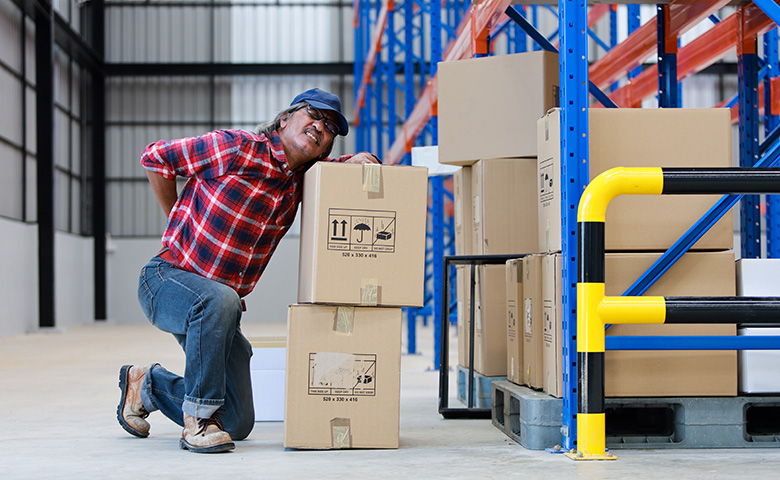Complaints about back pain can be heard in every workplace the world over, no matter the setting or industry. The ubiquity of this refrain can make it feel like an inevitability. Back pain is so omnipresent that, according to a New York Times health guide, it is listed as the second biggest reason that people see a doctor, right behind cold and flu symptoms. Despite its insistent presence in our lives, back pain is not unavoidable. With a few key additions to your workplace’s health and safety culture, acute injuries and repetitive stresses that cause back pain and the lost time that result from it can be reduced.
Invest in equipment
A great way to mitigate the toll repetitive lifting can take on workers is to provide them with equipment to help them lift and carry. Do a little research into best practices within your industry to determine the best equipment for the specific task at hand. If the price tag of the new equipment makes you wince, remember that back injuries to workers can be very expensive to the employer as well; the average cost of a claim for a lower back injury is over $38,000 according to the National Safety Council. And remember, having the equipment on hand is only half the battle—without the requisite training, the equipment can become a hazard itself. Ensure a safe work environment by training supervisors and workers on how to operate the equipment properly and to know its limits.
Combat complacency
Onboarding material handlers should always include proper lifting techniques and equipment training. But without frequent reminders to keep these safety protocols fresh, complacency can set into your workplace very easily. Supervisors should schedule frequent demonstrations, preferably with a veteran worker or vocal leader in the workplace. To keep workers interested and to strike a relatable, personal tone, share stories of how improper lifting techniques and complacency led to incidents of a serious back injury.
Focus on what’s in it for them
“Listen up, people,” a misguided supervisor says to a group of material handlers, “there were far too many workers comp claims last quarter! Start lifting with your legs—the cost of all these injuries is eating into our bottom line!” This is not how to motivate and lead staff to follow proper material handling protocols.
Workers will not absorb training or follow guidelines if they think it’s only for their boss’s benefit. A strong health and safety culture focuses on the well-being of all people in the workplace, regardless of their role in the company. Remind employees of the human cost of back injuries—like how hurting their back would affect their life outside of work. Making back safety about their wants and needs is a surefire way to get more buy-in from frontline workers.
Specific training
Management has the responsibility to determine material handling protocols specific to their workplace and the task they are asking of their workers. It’s not sufficient to say “be safe!” and walk away; outline in detail the safe way to complete any material handling task. Include lifting thresholds of any equipment workers need to use. Another idea is to demonstrate what safe loads and handling practices look like, so they are familiar and can visualize what safe behavior looks like.
Stretch breaks
Most back injuries in the workplace are the result of an accumulation of repetitive movements without sufficient rest. An innocuous repetitive movement done a thousand times seemingly without harm can suddenly culminate in a devastating injury. To help guard workers’ bodies against injury, frequent stretch breaks should be implemented. Having supervisors ensure workers take the required breaks for their workload is critical to decreasing the chances of injury.
Employers cannot remove the risk of back injuries from the workplace. But what you can control is the recovery time provided to any worker who is required to handle materials. You can also educate all material handlers (even the summer student unloading the reams of paper in the office) on how to lift and carry properly, and provide frequent reminders about the need to keep their backs safe. Providing frequent breaks to give their bodies a rest, offering comprehensive training on back safety, and including back-related issues in toolbox talks and other safety conversations will go a long way towards reducing the number of back injuries in the workplace.

